
“Not that I’m complaining, but what makes this time any different?” Yamaha’s Andrew Cullen queried, leaning from the railing of a brand new and sumptuously-optioned Yamaha AR195. “Easy,” I quipped while zipping up a well-worn pair of Jettribe GRB 2.0 boots. “I’m not wearing a stupid wetsuit.”
Andrew had reason to question my motives for a test day on the FX. Not much had changed from the previous 2017 model to 2018, apart from the Torch Red Metallic paint scheme. Nevertheless, I had performed reviews on the FX SVHO nearly every year straight since the launch of The Watercraft Journal in the Fall of 2013. And almost without fail, every photoshoot required me to wriggle my way into a wetsuit to stave off the bone-chilling temperatures. Yet, inexplicably on this late Autumn day, temperatures on Georgia’s Lake Allatoona were balmy, cooled by a slight breeze, graciously permitting my typical uniform of a t-shirt and board shorts. Comfort was the word of the day today, and I was going to enjoy myself.
Since its launch in 2012, the redesigned FX SVHO has seen very few changes: the addition of the Super Vortex High Output DOHC, supercharged powerplant (and a couple subsequent upgrades to that powertrain), the additional application of Yamaha’s featherweight NanoXcel2 material for the hull and deck, and of course, the addition of the dual throttle on-water brake and quick reverse RiDE system. Little else had been made or done to refresh the platform in 6 years’ time, so another review of the craft felt a little superfluous. It had even rightly earned the 2015 Watercraft of The Year award. (I had noted that the addition of RiDE is what finally pushed the 3-seater runabout “over the finish line” for that year.)
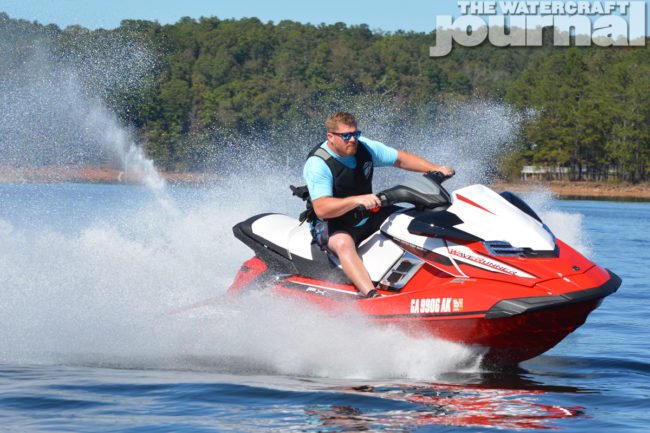
Now, in light of Sea-Doo’s new GTX Limited 300 and RXT-X 300, the FX looks quietly staid. Certainly its long, angular lines are handsome, the rich flicker of its metallic paint beneath the sun is still striking, but the FX SVHO now feels oddly demure, like a well-trained house pet. There’s very little rowdiness in the WaveRunner, whether cruising along the shoreline or pinned at wide-open-throttle; and that’s a very good thing. At no time does the performer feel loose, squirrelly or skittish; the looping strakes move and redirect water out and behind the nose as it slips across the lake. Even trimmed all the way down, hard corners are elegantly executed like a well-oiled plan. Steering input is intuitive, linear, almost premeditated.
Unlike the denser NanoXcel (“Nano 1”), the lighter NanoXcel2 allows for bit more “telegraphing” through the hull, meaning a ever-so-slightly bumpier ride (there’s a near-40 pound difference between the two FX models). Yet, the trade is lighter total weight – 833 pounds, to be exact. That, for a machine of this size (11-foot, 8-inches long, 4-feet wide, 4-feet tall) is significant given that Sea-Doo’s sporty RXP-X 300 tips the scales at 850-pounds. And its paid off too: the FX SVHO is the weapon of choice for Yamaha-sponsored AquaX racers when the water conditions are threatening. Likewise, more casual riders have found the hull and 33-gallons of storage to be a perfect one-two-punch for long distance rides. So the machine has a bit of a Swiss Army knife feel to it.
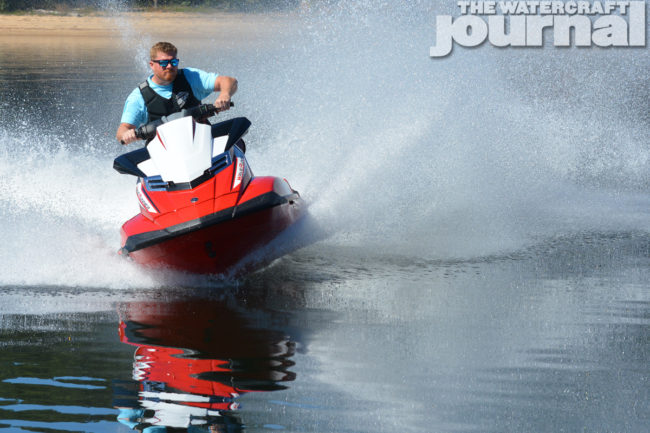
As noted, Yamaha has equipped the FX with plenty of storage but has broken it up into various compartments: a vacuous front bin, a smartly padded waterproof cubby beneath the dashboard, a Styrofoam-lined glove box, another watertight bin beneath the rear passenger and a “wet storage” cabinet in the rear for a tow rope or flipflops. Although slightly stepped, the large 3-person bench is mainly flat (compared to its Cruiser sibling’s stadium-style seating). And speaking of the dashboard, a single analog dial is flanked by two LCD digital displays reading off various stats on Yamaha’s “Multifunction Information Center” controlled via “Fast Access Instrumentation Buttons” panel.
Yamaha’s placed the handlebar toggles within reach (if you’ve got larger hands or abnormally long thumbs) including Cruise Assist and electronic trim. The flat-sided pistol grips are still a fan favorite. The FX is also equipped with laser-cut two-tone traction mats and a wide folding swim step. Because it’s now missing on all full-sized Sea-Doos, the Yamaha retains its reinforced tow eye on the rear so you can drag the kids around on a raft. The WaveRunner also includes the brand’s remote transmitter fob that controls the Yamaha’s Security Mode and Low RPM Mode, which disables the engine, and increases fuel-efficiency respectively.
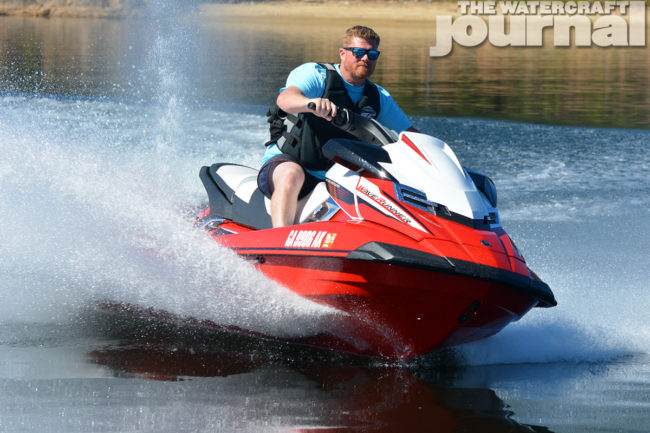
This particular morning was glassy flat. A few wisps of morning fog lingered on the hillsides and crept over the water, but the candied red Yamaha was not having any of it. Twin plumes of spray fanned out from the hull’s sides leaving a flawless V-wake in my trail. Had I chose to wear jeans and a button down shirt, it wouldn’t have mattered given how dry the ride was. Even in weaving through S-turns and giving chase to Andrew’s wake boat, nary a bead of water flicked over the bond rail. This was easily one of the calmest rides I had ever been on. The muted whistle of the centrifugal supercharger could be heard as I crept past the 50-mile per hour mark. The gentle deadrise of the FX lets the beam gradually come to plane – no herky jerky launches for this machine.
Admittedly, the FX SVHO is one of my personal favorites from Yamaha’s lineup. Even after a day’s spirited ride, my fuel gauge barely dipped below half of its 18.5 gallon tank. Priced at $15,299, the 2018 Yamaha FX SVHO WaveRunner is also smartly priced ($300 below the ’18 Sea-Doo RXT-X 300, $600 below the ’18 Sea-Doo GTX Limited 300 and exactly equally-priced with the ’18 Kawasaki Ultra 310X, which does not have brakes or screw-top watertight storage). When weighed for “bang for your buck” the FX SVHO still comes out a leader, and that’s why I keep coming back to it. And on a day like this, how could you blame me?







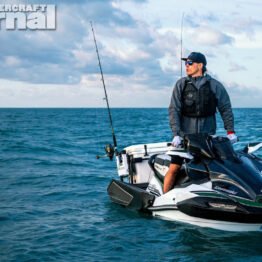


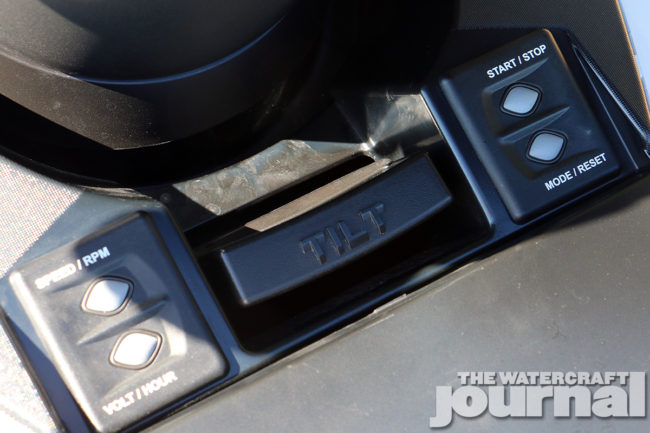
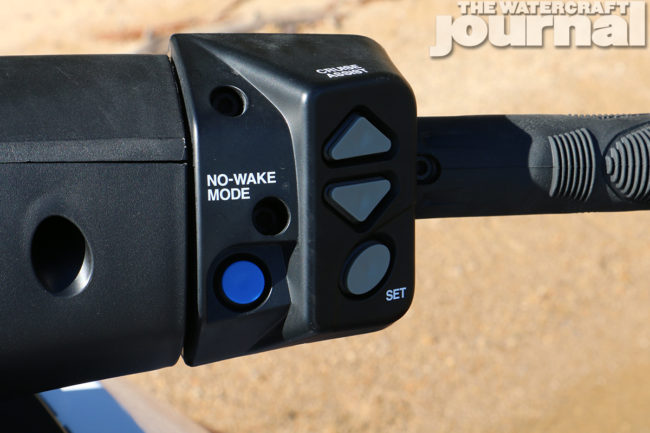




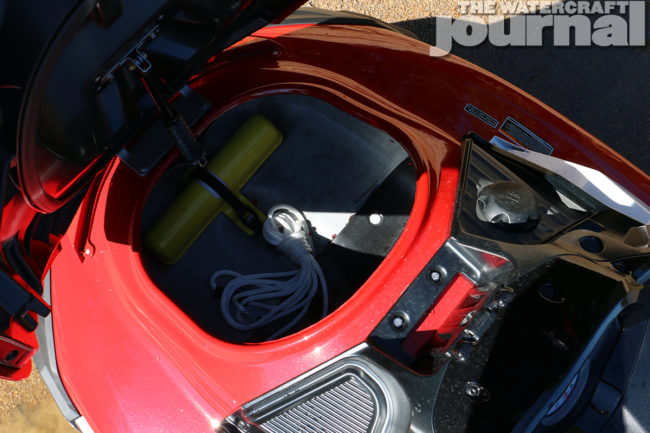


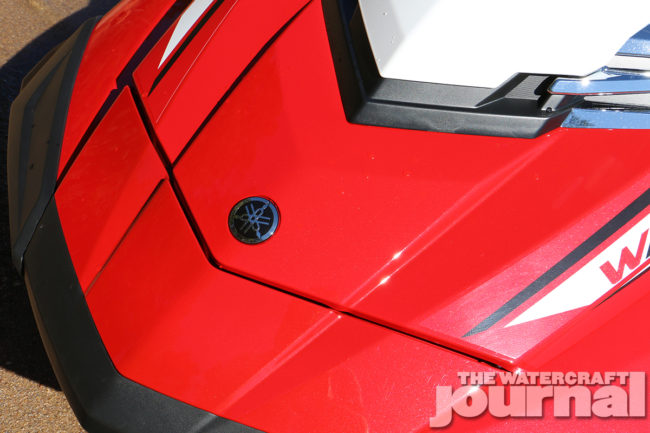
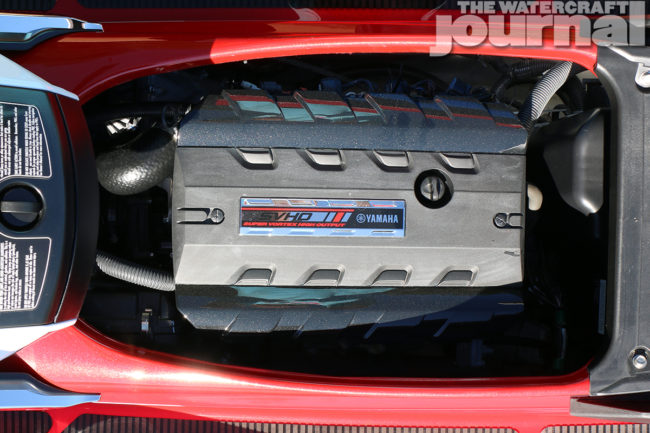

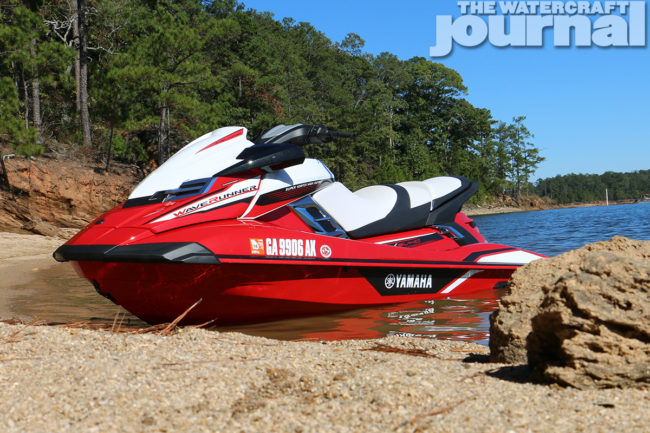

























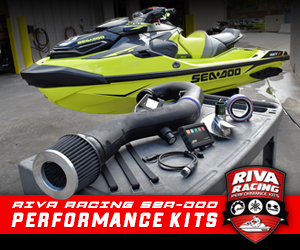




[…] Intellectual Honesty: 2018 Yamaha FX SVHO WaveRunner […]